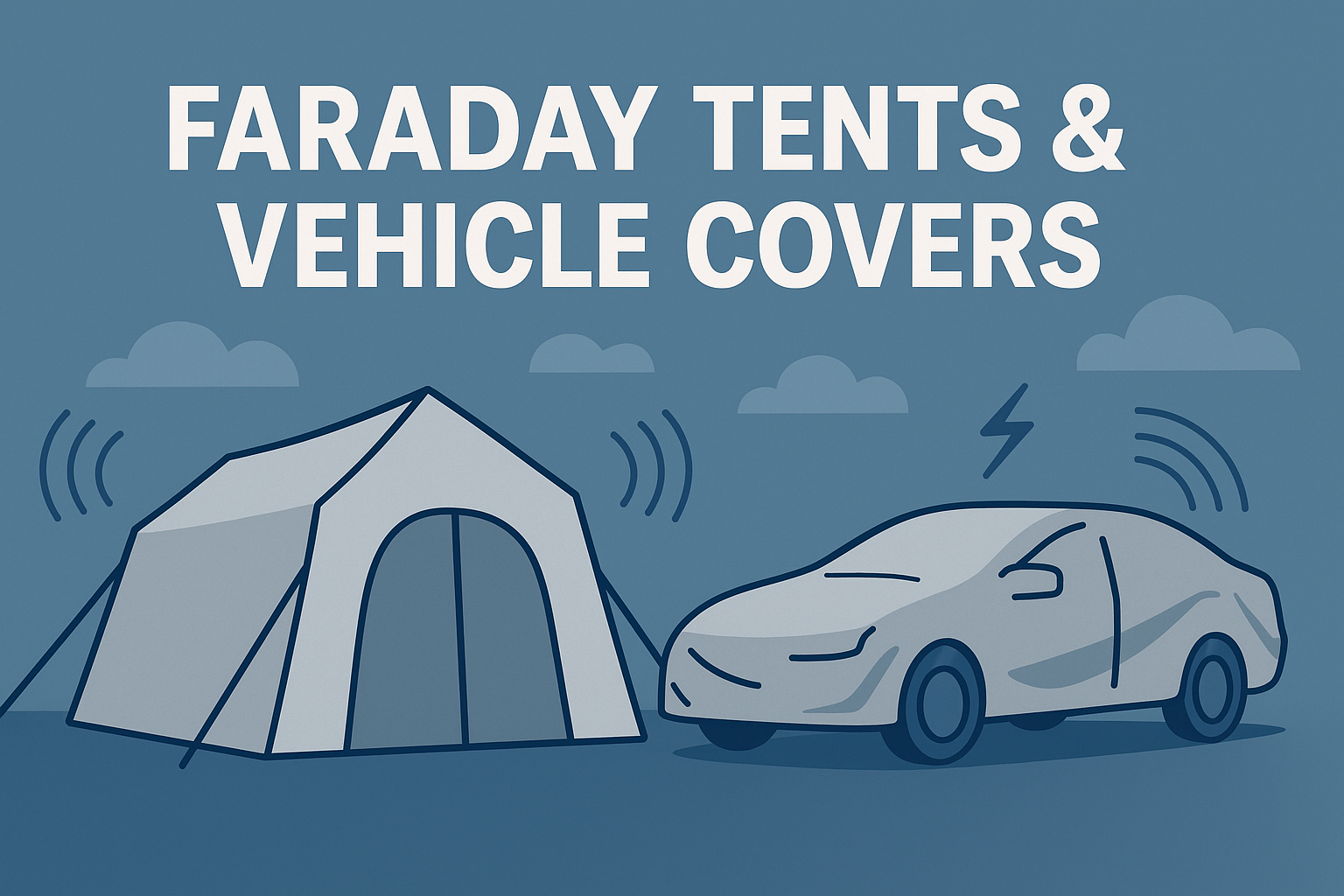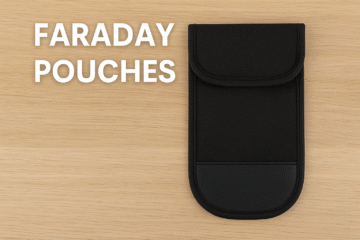How Frequency Shielding Form Padding Cushioned Barriers Can Block Invisible Signals
Wireless signals surround us — Wi-Fi, cellular towers, Bluetooth, smart meters — all transmitting energy we don’t see. As awareness of these invisible fields grows, so does interest in tools to manage or reduce exposure. One emerging solution: frequency-shielding foam padding.
Shielding foam padding is an innovative material that provides effective protection against various forms of electromagnetic interference.
This article explains what this material is, how it works, where it can be used in the home, how it compares to other shielding materials, and key buying and installation tips for the everyday consumer.
What Is Frequency-Shielding Foam?
Notably, shielding foam padding is versatile and can be used in various applications, offering significant benefits over traditional materials.
Items like shielding foam padding are essential in both residential and industrial environments for their protective qualities.
For added effectiveness, many consumers are now exploring shielding foam padding as a reliable option in their homes.
Simply put, frequency-shielding foam (also called conductive foam or RF foam gasket) is a cushioning material infused or coated with conductive fillers (nickel, copper, carbon, or other metals) that reflect and absorb electromagnetic fields. It is used for sealing gaps, lining surfaces, or integrating into cushions, workstations or shielding enclosures.
For example, one product, RayPad from LessEMF is described as “ultra-conductive foam providing excellent RF shielding … rated at 100-139 dB” for RF radiation. Less EMF Similarly, industrial suppliers list foam sheets with 90-120 dB shielding effectiveness for EMI/RF applications. Accio
Using shielding foam padding can help prevent unwanted signals from interfering with your electronic devices.
In other words: this is foam that doubles as a signal barrier.
Incorporating shielding foam padding into your setup can greatly enhance the performance of your electronics.
Why Foam? What Does It Offer?
Furthermore, shielding foam padding can be customized to fit a variety of spaces and needs.
You might wonder: why use foam rather than paint, fabric, film or solid metal? Here are some benefits of foam:
1) Cushioning and Comfort
Unlike stiff metal plates, foam is compressible and cushion-friendly — ideal for padding under desks, seats, behind mattresses, or in home theatre rooms. The material can conform to irregular surfaces and let you maintain comfort while adding shielding.
2) Gap Sealing and Gasketing
Many high-frequency signals sneak through seams, joints, or gaps. Conductive foam acts as a gasket, filling irregular spaces and maintaining contact between conductive surfaces, thereby creating a continuous barrier. One industrial materials firm outlines how “conductive foam gaskets are open-celled foams impregnated with conductive compounds and used to seal against EMI/RF signals.” Boyd | Trusted Innovation
When considering options for signal protection, shielding foam padding stands out due to its adaptability.
3) Versatility and Retrofitting
You can cut, shape, and install foam fairly easily — making it ideal for retrofit applications: behind drywall, beneath furniture, under carpets, or in custom shielding builds without major renovation.
4) Broad-band Shielding
Good foam padding doesn’t only work for one frequency band; many claim broad band attenuation from a few MHz up through several GHz — making them suitable for Wi-Fi, cellular, 5G, Bluetooth, etc. For example, RayPad claims between 100-139 dB shielding. Less EMF
How It Works: The Science
Reflection and Absorption
When electromagnetic waves strike a conductive material, two main things happen: the wave can be reflected (bounced back) or absorbed (converted into small heat energy within the material). Electromagnetic shielding is the practice of reducing or redirecting the EM field using conductive or magnetic materials. Wikipedia
Moreover, using shielding foam padding is a great way to enhance your living or working environment.
Many homeowners appreciate shielding foam padding for its ease of installation and effective results.
Foam that is loaded with nickel, copper, or carbon provides both conductive paths (for reflection) and lossy material (for absorption). For instance, research into carbon- or graphene-infused foams shows they deliver high shielding effectiveness with lower weight at microwave and THz frequencies. arXiv+1
Construction and Contact
Shielding effectiveness depends on good contact, minimal gaps, and continuity of the conductive layer. A seam or opening can dramatically reduce attenuation. Similarly, the transition between conductive foam and grounding or enclosure surfaces matters: if not properly connected, the foam may behave poorly.
Standards and Measurements
Shielding is often measured in decibels (dB). A drop of 20 dB means the signal power is reduced by ~90%, 40 dB means ~99%, 60+ dB ~99.9%. Many industrial foam gaskets cite 60-100 dB or more. See ASTM D4935-18 and IEEE 299 Standard. Sur-Seal+1
Applications in the Home
While originally designed for electronic enclosures and industrial use, frequency-shielding foam is increasingly available to consumers in shielding builds. Here are some practical home uses.
Underneath Mattresses or Headboards
Placing a layer of conductive foam between a mattress and bed frame or behind a headboard can reduce signal exposure from below or behind your sleeping position. Because foam is comfortable and cushioned, it fits the setting well.
Behind Workstations or Desks
If you have a desk near a noisy router or cell appliance wall, placing a foam pad behind the computer or between the desk and wall can help block unwanted reflections or direct signals away from your body.
Under Carpets or Underlayments
In apartment or condo settings where you have limited wall access, a thin foam layer beneath a carpet or underlay can act as a secondary shield barrier for signals coming from below floors or neighboring units.
Custom Gasket Sealing
If you’re building a custom “shielded box” for your router or smart home hub, foam gaskets can help seal the lid and prevent signal leakage. For example, the product TitanRF Faraday Foam Gasket by Mission Darkness is tailored for this use — foam strip with conductive fabric and adhesive backing designed for enclosures.
How to Choose the Right Frequency Shielding Foam Padding
Here are key criteria to evaluate when choosing frequency-shielding foam:
- Attenuation specification (dB) & frequency range: Look for verified numbers across Wi-Fi, cellular, 4-5 GHz, 2.4 GHz, etc.
- Conductive filler & resistivity: Foam loaded with nickel/copper typically performs better. For example, RayPad claims 0.05 ohm per square surface resistivity. Less EMF
- Thickness & surface dimensions: Thickness may affect comfort if used under mattress or carpet; width matters for desk or board use.
- Compression & resilience: Foam must retain its shape and conductive path even under load (bed mattress, carpet) to maintain performance over time.
- Grounding or conductive path continuity: Some installs may require grounding or connection to a conductive surface to maximize performance.
- Safe for home use: If used near beds, furniture, or children, check fire rating, VOCs, durability.
📋 Comparison Table – Foam Padding for Frequency-Blocking
| Product | Approx. Price* | Thickness / Size | Claimed Attenuation / Features | Best Use Case |
|---|---|---|---|---|
| TitanRF Foam Gasket (Mission Darkness) | ~$8–20 (strip size) | Strip, adhesive backing | High shielding foam for enclosures (exact dB often unspecified) | DIY Faraday box, router enclosure, small gap sealing |
| Metallized Foam Sheet (Würth Elektronik) | ~$180 (sheet size) | Large sheet, metallized surface | Premium metallized foam, high conductive backing | Home theatre room, mattress underlay, serious DIY shielding |
| Conductive PU Foam Sheet (All-Spec) | ~$25–80 depending size | Sheet form, moderate spec | General spec conductive foam; likely 60-90 dB+ for certain bands | Budget cushions, under desks, secondary layer shielding |
| Foam Strip Gasket (Budget) | ~$10–15 | Strip form, small size | Claims shielding foam for small enclosures; less verified spec | Key component sealing, small box joints, furniture retrofit |
| RF Conductive Foam Sheet (Leader Tech) | ~$90–100 | 19″ x 19″ sheet (example) | Industrial spec conductive foam sheet | Larger area installs, workshop rooms, behind cabinetry |
*Prices are approximate at time of research; always check current offers.
Product Examples
- RayPad: Ultra-conductive foam, rated 100-139 dB, nickel/copper loaded, width 22″.
- TitanRF Faraday Foam Gasket: Adhesive backing foam strip for enclosures and sealing.
- Generic Conductive Foam Gasket Sheet: Smaller DIY foam sheets costing <$20, suitable for small scale builds.

Mission Darkness TitanRF Faraday Foam Gasket
$8.00
Mission Darkness + others

Würth Elektronik Metallized Foam Sheet
$9.71
DigiKey + others

All‑Spec Conductive Polyurethane Foam Sheet
$25.22
Hisco

RF Faraday Foam Gasket/Conductive Foam Strip
$10.99
Walmart – Tasharina Corp + others

Leader Tech RF Conductive Foam Sheet
$103.71
DigiKey
Highlights & Notes
- Mission Darkness TitanRF Faraday Foam Gasket: Strong gaskets intended for Faraday-boxes and enclosures; good spec & adhesive backing.
- Würth Elektronik Metallized Foam Sheet: Premium sheet from electronics supply; higher cost but broad spec.
- All‑Spec Conductive Polyurethane Foam Sheet: Mid-range general purpose option for DIY home use.
- RF Faraday Foam Gasket/Conductive Foam Strip: Budget friendly foam strips; less sheet area but can serve smaller installs.
- Leader Tech RF Conductive Foam Sheet: Industrial grade foam sheet; higher cost but high spec if your goal is serious shielding.
Installation & Best Practices
- Clean surface before application: Dust or debris can interfere with conductive contact.
- Apply foam with minimal gaps: Overlap edges or butt tightly for continuous coverage.
- Avoid electrical contact hazards: Since foam is conductive, keep away from exposed wiring, outlets or live circuits. For instance, RayPad notes “keep away from electrical wires” in its safety notice. Less EMF
- Seal edges or combine with conductive tape: Edges of frequency shielding foam padding often leak; adding metallic tape or mesh over joints improves performance.
- Test before and after installation: If you have an RF meter, compare readings. Even a simple phone-bar test near a router can indicate change.
- Maintain over time: Check foam cushions under load for compression; replace if material degrades or loses conductive fillers.
Limitations & Considerations
- frequency shielding foam padding is not a “magic bullet”: It works best when used as part of a layered shielding strategy (foam + mesh + fabric + grounding).
- Signals can reflect: Without proper grounding or coverage, shielding may reflect rather than absorb, potentially increasing localized fields. Researchers discuss this risk in shielding literature. ScienceDirect
- Cost vs benefit: Very high spec foams (100 dB+) may cost more than other simpler solutions (paint, mesh) depending on coverage area. Ensure you match the spec to your actual need. Sur-Seal
- Comfort and practicality: Under-mattress foam must maintain comfort; carpet installations may require flooring changes; do not block ventilation or appliance access.
Final Thoughts
If you’re looking for a comfortable, retrofit-friendly solution to reduce wireless signal exposure in your home — especially around beds, desks, or floors — frequency shielding foam padding offers a compelling option. While it’s less well known to homeowners than paint or films, its ability to cushion and shield simultaneously makes it ideal for hidden installations.
Start by defining your goal (bedroom comfort, workstation isolation, router enclosure), then evaluate foam by its real-world specs (dB, frequency range, filler materials). Combine it with proper sealing, grounding, and coverage for best results.
As our wireless world grows louder, adding a layer of thoughtful barrier isn’t just about protection — it’s about reclaiming quiet. Frequency-shielding foam padding may be a key piece in that quieter puzzle.
References
Material selection guidance for EMI shielding – Sur-Seal blog. Sur-Seal
RayPad product specs – LessEMF. Less EMF
Industrial foam shielding market – RF shielding foam overview. Accio
Electromagnetic shielding concepts – Wikipedia. Wikipedia
Investing in shielding foam padding can be a wise choice for those looking to reduce interference and improve their environment.
Choosing quality shielding foam padding is essential to maximize the benefits it can deliver.
Absorber foam technology – EMI absorber foam article. Compelma
Ultimately, shielding foam padding provides a solution for those seeking to create a quieter, more controlled indoor space.
With the right applications, shielding foam padding can provide both comfort and protection in many scenarios.

